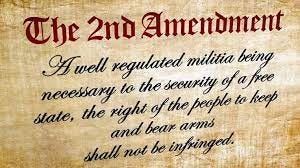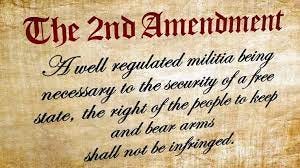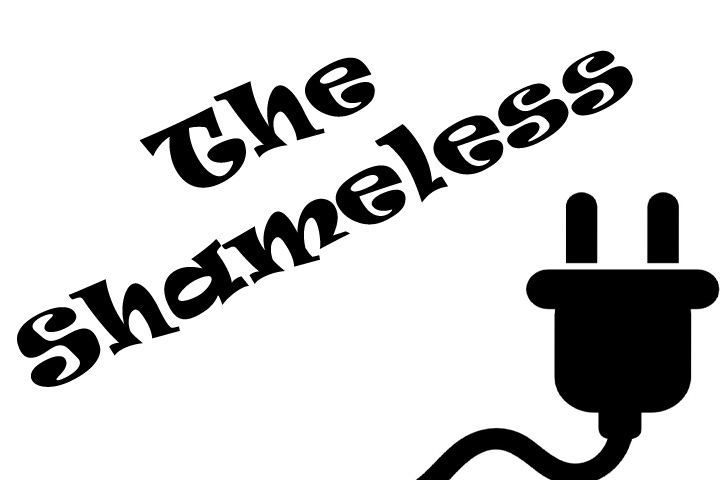Photo Credit: historyonthenet.com
Issue #162 Government October 27, 2022
No ads or annoying popups ever! So instead, please see the important information at the bottom of this post. Please keep those “Likes” and comments coming! Thanks!
Here we go again. Another week, another school shooting in America. On Monday, October 24, 2022, a 19-year-old former student of the Central Visual and Performing Arts High School in St. Louis, Missouri returned to the school with an AR-15 rifle, over 600 rounds of ammunition, and more than a dozen high-capacity magazines. Somehow he was able to get into the school and start shooting, killing the gym teacher and a 15-year-old student. The shooter died at a hospital after a gun but battle with police officers.
We are still in October, but so far this year there have been at least 67 shootings on school grounds. The debate on gun control continues.
All over the world, the United States is known as a violent, gun-happy country.
The Gun Debate and the Second Amendment
The second amendment to the Constitution of the United States, adopted in 1791 as part of the Bill of Rights, was designed to provide a constitutional check on federal congressional power to organize armed and discipline the Federal militia.
The Second Amendment reads, “A well-regulated militia, being necessary to the security of a free state, the right of the people to keep and bear arms, shall not be infringed."
It is important to remember that when the Second Amendment was written, the arms referred to were muskets. Think about how you load a musket: you first have to open the bag of gunpowder, pour some gunpowder into the musket, then add the musket ball, then close the musket, and then shoot the gun. That takes quite a bit of time. It is quite different today when we have automatic rifles, especially the ones meant for the military, that can shoot many rounds at once, killing many people at once.
The Second Amendment was initially designed to check federal power, and also provide state government with tools that would enable the states to oppose the general government.
Over the centuries, the Supreme Court has weighed in on different interpretations of the Second Amendment. In District of Columbia v Heller (2008), Justice Antonin Scalia delivered the opinion for a narrow 5 to 4 majority, that held that self-defense was a central component of the amendment. The Supreme Court also affirmed previous rulings that the Second Amendment ensures the right of individuals to take part in the defense of their liberties by taking up arms and participating in an organized militia.
Although the 2008 ruling applied only to federal jurisdictions, in 2010, in the case of McDonald v Chicago, another 5 to 4 majority held that the right to possess a handgun in the home for the purpose of self-defense is applicable to the states as well through the 14th Amendment’s due process clause.
The Historical Background for the Second Amendment
As with many elements of the United States Constitution, the Second Amendment was based on English law, with which the founders were very familiar. In the late 16th century, Queen Elizabeth I instituted a national militia in which individuals of all classes were required by law to take part to defend her kingdom. The Queen’s idea of a national militia failed terribly, but the idea of using a militia would be used in the 18th century by the Founders.
For most of the first two centuries in the United States, many constitutional historians disagreed about the notion that the Second Amendment protected an individual right to keep and bear arms for the purpose of self-defense in the home.
However, by the late 20th century, helped along by lobbyists for the NRA, the self-defense component of the Second Amendment had been adopted by many judges. Those Americans who opposed gun control also decided that the Second Amendment gave them the right to keep and bear arms, any kind of arms, for any reason.
Many of the drafters of the Constitution had previously served in the Continental Army during the Revolutionary war. Those who called themselves “Federalists” feared the current consequences of a weak central authority. They wanted to shift power, which was pretty much all held by the States at that time, to a new national government.
The “Anti-Federalists,” including Patrick Henry, opposed the new Constitution. They worried that the new government would establish a standing army of professional soldiers and disband the 13 state militias, which were made up of part-time citizen soldiers and thought to be bulwarks against tyranny. In the state militias, every white man aged 16 to 60 was enrolled in the military and was required to own and bring their own musket and other military weapons when called to serve.
The Second Amendment Today
In the last couple of decades, many on the right wing and many gun owners oppose even sensible gun control, thinking that gun control infringes on their rights to self-defense. Proponents of gun control try to teach that reasonable gun control means things like background checks, “red flag” laws, and other elements that would keep guns away from people who would use them illegally, especially assault rifle-type guns which were designed for use in the military.
The parents of the St. Louis school shooter asked the police to take away his assault rifles, but somehow the shooter was able to get them back. Even though he had been recommended for mental health services more than once, he was not “red-flagged” against having weapons in his possession.
Many far right-wing people also use the phrase “Second Amendment Rights" to indirectly mean they can shoot and kill anyone with whom they disagree.
As more and more political violence erupts in our uncivil discourse, the prospect of everyone arming themselves and going after those with whom they do not agree becomes more and more frightening.
Even more frightening is the fact that we are not just talking about handguns, hunting rifles, or even small-bore rifles these days. More and more of the violent right-wing arm themselves with multiple high-capacity assault rifles of one type or another. These assault rifles, which were meant for the military, are capable of shooting many people in just a few seconds without the shooter having to reload because of the large capacities of those guns. Those are not the types of weapons envisioned by the Founders when they wrote the Second Amendment.
Many of the school shooters have been only 15, 16, or 17 years old. Some gun rights opponents do not even want an age limit on teenagers who can own assault-style rifles.
So where do we go from here? How many school shootings do we have to endure? How many shootings at grocery stores, malls, churches, temples, and movie theaters can we expect? How do we stop the preponderance of gun violence in the United States, where there are many times more guns in individual hands than in any other country in the world?
Let us know what you think about the Second Amendment and/or gun control initiatives. Is what we have presently enough?
Help us to grow “We Are Speaking!”
Read and listen to “We Are Speaking” on the iOS app!
Please support us: subscribe for free or upgrade your current subscription to a paid level at only 35¢ per issue.
Please check out the products and services of the TeamOwens313 Global Creative Community Branding and Marketing Academy (GCC BMA) for independent writers and creative professionals. We offer online training, group and one-on-one coaching, a creative networking community, and a branding and marketing membership site with group coaching and monthly educational topics.






